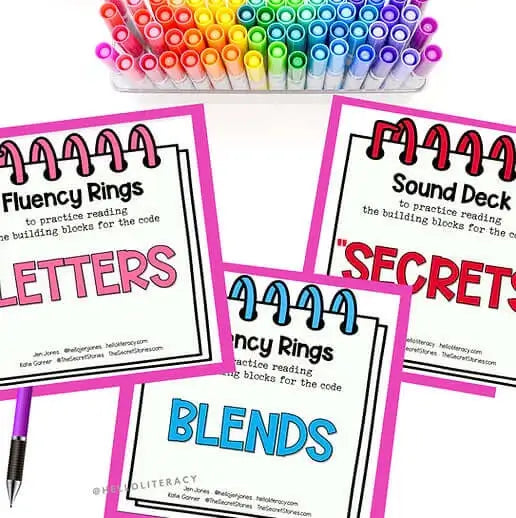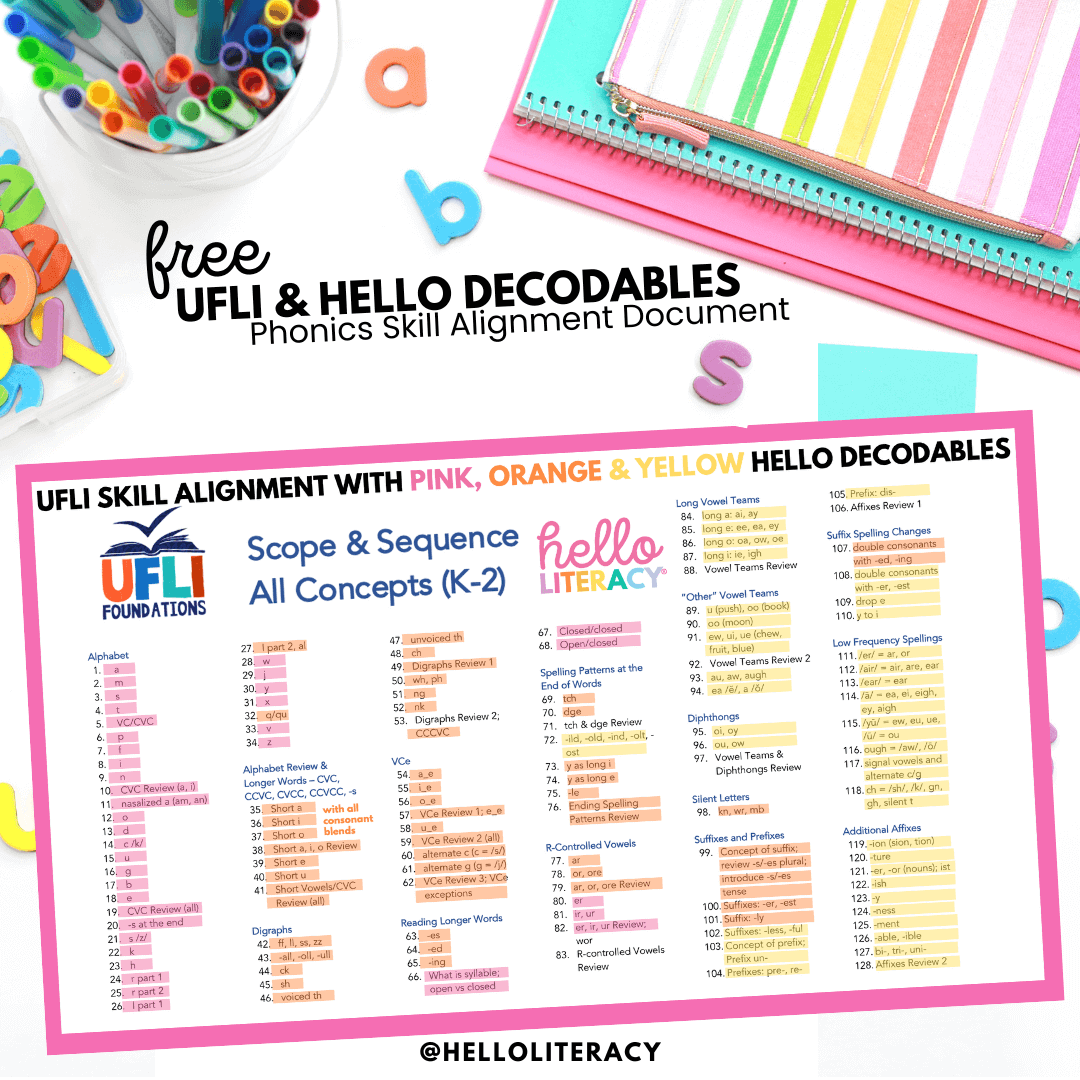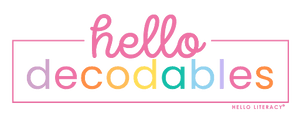
· By Jen Jones
Engaging Phonics Worksheets for Every Learning Stage
Engaging Phonics Worksheets for Every Learning Stage
Phonics worksheets are essential tools that help children learn to read by connecting letter sounds to words. For parents seeking effective resources for their early-elementary children, using high-quality phonics worksheets can build a strong reading foundation. Here’s a quick insight into why these educational tools are indispensable:
- Phonics Worksheets: They focus on sounds of letters and letter groups, aiding children in recognizing and forming words.
- Learning Stages: Cater to different age groups, ensuring that all learning stages—from simple letter sounds to complex word formations—are covered.
- Reading Instruction: Step-by-step guidance in blending, decoding, and phonemic awareness, making reading fun and engaging.
As an educator with over 30 years of experience, having seen the transformative power of phonics worksheets, I am passionate about creating resources that are effective and engaging for young learners. My goal is to make reading instruction joyful and accessible for everyone. Let’s dive into how phonics worksheets can help your child at every stage of learning.

Why Phonics Worksheets are Essential
Phonics worksheets are more than just pieces of paper with letters and words. They are powerful educational tools that help children learn to read by connecting sounds (phonemes) with symbols (graphemes). Here’s why they are indispensable:
The Phonics Method
Phonics is a proven method for teaching reading. It helps children understand the relationship between letters and sounds. By using phonics worksheets, kids can practice this method in a structured way.
For example, a worksheet might have a picture of a cat and the letters "c," "a," and "t" for the child to match. This simple exercise helps children see and hear how letters form words.
Mastering Letter Sounds
Understanding letter sounds is the foundation of reading. Phonics worksheets often focus on one sound at a time, making it easier for children to grasp.
Fun Fact: Children who can identify letter sounds can usually start reading simple words within a few weeks. This early success boosts their confidence and interest in reading.
Building Reading Skills
Phonics worksheets help build essential reading skills such as blending and decoding. Blending is the ability to put sounds together to make words, and decoding is the ability to break down words into individual sounds.
Case Study: In Montgomery County, MD, where foundational skills in the curriculum were lacking, teachers who incorporated phonics worksheets saw significant improvements in their students' reading abilities.
Versatile Educational Tools
Phonics worksheets come in various formats, from simple letter recognition to complex vowel combinations. They can be used in different settings, whether in a classroom, at home, or even online.
Example Activities: - Letter Cards: Hide letter cards around the room and have students find the card that matches a given sound. - Hopscotch Grid: Draw a hopscotch grid with letters. Students jump on the letters while saying the corresponding sounds.
These activities make learning interactive and fun, ensuring that children remain engaged.
Supporting a Structured Approach
Phonics worksheets support a structured approach to reading instruction. They provide a clear progression from simple to complex skills, ensuring that children build on their knowledge step by step.
Quote: "Phonics worksheets are like stepping stones that guide children through the intricate process of learning to read," says Jen Jones, an expert in phonics education.
In summary, phonics worksheets are essential for helping children master the sounds of letters, build reading skills, and enjoy the process of learning to read. They are versatile tools that can be adapted to any learning environment, making them a valuable resource for educators and parents alike.
Next, let’s explore the different types of phonics worksheets available and how they cater to various learning stages.
Types of Phonics Worksheets
Phonics worksheets come in various types, each designed to target specific reading skills. Here are some of the most common types:
Beginning Sounds
Worksheets focusing on beginning sounds help young learners recognize the initial sounds in words. For example, a worksheet might have pictures of a cat, car, and cake and ask students to identify the sound that starts each word. These activities are crucial for developing phonemic awareness.
Consonants
Consonant worksheets can help kids distinguish between beginning and ending consonants, as well as consonant blends. For instance, a worksheet might have students circle the correct ending consonant for words like dog or cat. Consonant blends like bl, cr, and st are also featured to help children understand how multiple consonants can work together.
Vowels
Vowel worksheets focus on the different sounds vowels make. Activities might include matching words with the same vowel sounds, or sorting words based on their vowel sounds. For example, students might sort words like cat, bat, and hat into the short vowel sound /a/.
Phonemes
Phoneme worksheets help students write letters and words by "sounding out" simple words. This type of worksheet might ask students to break down the word dog into its individual sounds: /d/ /o/ /g/. These exercises are fundamental for developing decoding skills.
Rhyming Exercises
Rhyming worksheets are designed to help children recognize and produce rhyming words. Activities might include matching pictures of rhyming words or completing word ladders where each step up the ladder changes one letter to create a new rhyming word.
These different types of phonics worksheets ensure that children build a strong foundation in reading by focusing on essential phonics skills. Each type targets a specific aspect of phonics, making it easier for educators and parents to tailor learning experiences to individual needs.
Next, let’s explore phonics worksheets tailored for different age groups and learning stages.
Phonics Worksheets for Different Age Groups
Phonics Worksheets for 4-5 Year Olds
At this age, children are just starting their reading journey. Phonics worksheets should focus on simple consonants and short vowels. These worksheets can help kids recognize and write basic letter sounds. Activities like coloring pictures that start with a specific letter or matching letters to pictures are perfect.
- Simple Consonants: Worksheets might ask kids to trace or write letters like 'B' for 'ball' or 'C' for 'cat'.
- Short Vowels: Children can fill in the missing vowel in words like 'c_t' (cat) or 'd_g' (dog).
- Blending Sounds: Simple exercises where kids blend consonants and vowels, like 'ma' and 'pa'.
- Letter Recognition: Fun activities like finding all the 'A's in a page full of letters.

Phonics Worksheets for Grade 1
First graders are ready for more complex tasks. Phonics worksheets for this age group introduce CVC (consonant-vowel-consonant) words, long and short vowels, consonant blends, and digraphs.
- CVC Words: Worksheets where students spell out words like 'bat', 'dog', and 'sun'.
- Long and Short Vowels: Differentiating between sounds in words like 'cake' and 'cat'.
- Consonant Blends: Activities focusing on blends like 'bl', 'cl', and 'fl'. For example, filling in the missing blend in '___ock' (block).
- Digraphs: Worksheets that teach 'ch', 'sh', 'th', and 'wh'. For instance, matching pictures to words like 'chip' or 'ship'.

Phonics Worksheets for Grade 2 and Beyond
Older students tackle more challenging phonics skills. Phonics worksheets for this group focus on complex vowel combinations, multisyllabic words, and advanced decoding skills.
- Complex Vowel Combinations: Worksheets with words like 'boat', 'rain', and 'spoon' to teach combinations like 'oa', 'ai', and 'oo'.
- Multisyllabic Words: Breaking down words like 'basketball' or 'elephant' into syllables.
- Decoding Skills: Activities that help students decode unfamiliar words by sounding them out.
- Advanced Phonics Rules: Lessons on silent letters, soft 'c' and 'g', and other advanced rules. For example, identifying the silent 'e' in 'cake' or 'bike'.

Each of these phonics worksheets is designed to build on the previous skills, ensuring a smooth transition as students progress through different learning stages. This structured approach helps children develop strong reading abilities, setting them up for future academic success.
Next, let's look at some fun and interactive phonics activities that can make learning even more engaging.
Fun and Interactive Phonics Activities
Phonics worksheets are great, but adding some fun and interactive activities can make learning even more exciting for kids. Here are a few activities you can try:
Letter Labels
Letter labels can turn any classroom or home into a phonics playground. Label common objects with their starting letters. For instance, put a "B" on a book, "C" on a chair, and "D" on a door. This helps children connect letters with everyday items.
Example: In one classroom, a teacher labeled objects around the room, and students had to match pictures with the correct labeled objects. This interactive method reinforced their understanding of beginning sounds.
Go Fish
Go Fish isn't just a card game; it can be a fantastic phonics activity. Create a deck of cards with pairs of letters or simple words. Kids ask each other for cards to make pairs, practicing their letter recognition and reading skills.
Example: A parent used Go Fish with letter cards to help their child recognize consonant blends. The child learned to ask, "Do you have a 'ch'?" and match it with a picture of a 'ch' sound word, like "chair."
Letter Swap
Letter Swap is a fun way to teach kids about word formation and phonemic awareness. Write a word on a card, then give kids a set of letters to swap and form new words. For example, starting with "cat," they can swap 'c' with 'b' to make "bat."
Example: In a small group activity, students swapped letters to change "dog" to "log," then to "fog." This exercise helped them understand how changing one letter can alter a word's meaning.
Spelling Challenges
Spelling challenges can be a competitive and engaging way to practice phonics. Create a list of words and have kids spell them out loud or write them down. You can make it a game by giving points for each correct spelling.
Example: During a spelling bee, kids were asked to spell words with short and long vowel sounds. This not only made the activity fun but also reinforced their understanding of vowel sounds.
Silent Simon
Silent Simon is a twist on the classic game Simon Says, but with a phonics focus. Instead of saying "Simon says," use phonics instructions. For example, "Simon says find something that starts with 's'." Kids have to listen carefully and follow the phonics-related commands.
Example: A teacher used Silent Simon to help students identify objects with specific sounds. When the teacher said, "Silent Simon says touch something that starts with 'b'," kids eagerly searched for items like books or bags.
These activities can transform phonics practice from a chore into an enjoyable experience. Next, we’ll cover how to use phonics worksheets effectively to maximize learning outcomes.
How to Use Phonics Worksheets Effectively
Using phonics worksheets can be a game-changer in teaching reading skills. Here's a step-by-step guide to maximize their effectiveness:
Step-by-Step Teaching
-
Start Simple: Begin with worksheets that focus on basic letter sounds. For example, worksheets that help kids identify the beginning sounds of words can set a solid foundation.
-
Introduce Phonemic Awareness: Use worksheets that highlight phonemic awareness. These exercises help children hear, identify, and manipulate individual sounds in words. For instance, worksheets that ask kids to match pictures with the same beginning sounds.
-
Letter Sounds: Move on to worksheets that deal with specific letter sounds. Worksheets that require students to fill in missing letters in words can be very effective. For example, "_at, _og, _ig" could be completed as "cat, dog, pig."
-
Blending: Use worksheets that encourage blending sounds to form words. This can include activities like connecting letters to form CVC (consonant-vowel-consonant) words (e.g., cat, dog, pig).
-
Decoding: Finally, introduce worksheets that focus on decoding skills. These worksheets can include more complex tasks like reading short sentences or stories and identifying words with specific phonics rules.
Phonemic Awareness
Phonemic awareness is crucial for reading success. Worksheets that include rhyming exercises, sound matching, and segmentation can help. For example, a worksheet might ask students to circle all the pictures that rhyme with "cat."
Example: A study from the National Reading Panel shows that phonemic awareness is more effective when combined with letters. So, don't just focus on sounds; incorporate letters too.
Letter Sounds
Worksheets that focus on specific letter sounds help students understand how letters correspond to sounds. These can include:
- Initial Sounds: Matching pictures to their initial letters.
- Ending Sounds: Identifying the ending sounds of words.
- Middle Sounds: Filling in missing middle vowels in CVC words.
Blending
Blending is the process of combining individual sounds to form words. Worksheets that help with blending might include:
- Sound Strips: Students blend sounds written on strips of paper.
- Word Ladders: Students change one letter at a time to form new words (e.g., cat to bat to hat).
Decoding
Decoding is the ability to read words by sounding them out. Worksheets can support this by:
- Decodable Texts: Short stories or sentences that use words students have learned to decode.
- Word Families: Grouping words with similar patterns (e.g., cat, hat, bat).
Tip: Use decodable books to reinforce newly learned phonics skills. For example, the book "Sail Away" focuses on long 'a' sounds, helping students practice this specific phonics rule (source).
By following these steps, you can make the most out of phonics worksheets and help your students develop strong reading skills.
Next, let’s dive into some frequently asked questions about phonics worksheets to clear up any lingering doubts.
Frequently Asked Questions about Phonics Worksheets
What is a Phonic Worksheet?
A phonic worksheet is a tool designed to help children understand the relationship between letters and sounds. It typically includes activities that focus on:
- Letter Sounds: Matching letters to their corresponding sounds.
- Word Formation: Combining letters to form words by sounding them out.
For example, a worksheet might ask kids to fill in missing vowels in words like "c_t" to form "cat."
How Can I Teach Phonics in a Fun Way?
Teaching phonics doesn't have to be boring! Here are some engaging methods:
- Interactive Activities: Use games like "Go Fish" with letter cards to make learning fun.
- Spelling Challenges: Have a "spelling bee" where kids spell out simple words.
- Silent Simon: Similar to Simon Says but with letter sounds. For instance, "Simon says touch the letter that makes the /b/ sound."
By incorporating these activities, you can make phonics lessons more enjoyable and effective.
How Do I Teach My 4-Year-Old Phonics?
Teaching phonics to a 4-year-old involves introducing them to basic phonemic awareness. Here’s how you can start:
- Alphabet Introduction: Begin with simple letter recognition activities.
- Sound Matching: Use worksheets where kids match pictures to their beginning sounds.
- Phonemic Awareness: Focus on activities that help them hear and identify individual sounds in words.
For instance, a worksheet might show a picture of a cat and ask the child to circle the letter 'C' from a list of letters.
By using these methods, you can build a strong phonics foundation for your child.
Next, let’s explore more about how to use phonics worksheets effectively.
Conclusion
At Hello Decodables, we believe that teaching phonics with a structured approach can be life-changing for young readers. Our phonics worksheets are designed to follow the principles outlined by the Science of Reading, ensuring that each activity builds on previously learned skills.
Structured Approach: Our worksheets are part of a systematic, explicit method of teaching phonics. This means each worksheet focuses on a specific phonics skill, from simple letter sounds to complex vowel combinations. This structured approach helps students build confidence and proficiency step by step.
Science of Reading: Research shows that a structured, systematic approach to phonics is the most effective way to teach reading. Our resources are aligned with these findings, offering numerous opportunities for students to practice new skills while revisiting previously taught ones. This method not only improves decoding skills but also enhances fluency and comprehension.
Phonics Success: Success in phonics opens the door to a world of reading and learning. By using our worksheets, students can master essential reading skills in a fun and engaging way. Whether you're a parent or a teacher, our resources are designed to make phonics instruction straightforward and effective.
Explore our digital phonics products to fast-track your students' reading journey today!
By following a structured phonics approach, you can ensure your child experiences the joy and success that comes with mastering reading.
